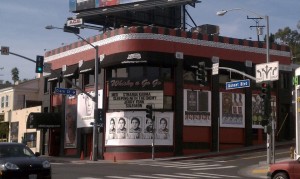I’m leaving my weekly therapy sessions with a headache these days, because I’m working through another deeply embedded flaw in my soul.
Mood music:
http://youtu.be/louQ7s1ZkGU
It’s not nearly as bad as the therapy I had in 2004-2006, when I had to endlessly churn the sewage of my childhood memories in search of clues on what was wrong with me and how I got that way. Back then, I didn’t know myself very well. Now I do.
Knowing myself as I do, I’ve started to zero in on the ongoing flaws that hold me back and hurt loved ones. That apparently requires a few more trips to the sewer.
I’ll give you a fuller account further along in this process. For now, let’s just say I have a wall I tend to hide behind when the going gets tough. This wouldn’t be much of a problem if not for the fact that life is ALWAYS tough. Not just for me, but for everyone. We all have our Crosses to carry and difficulties to endure. In my case, it’s a lot harder with a wall in the way.
So here we are again. Back in the mental sewer. I know my way around now, but the stench can still be too much to take.
The first question from the therapist was if I had talked to my mother lately. No, I told him. I thought Mom and I were making progress in December, but she couldn’t handle this blog and went off the deep end. I won’t defend myself. She’s entitled to her point of view. But let’s just say I was hoping to be writing posts by now about how we were reconciling.
So no, I told him. We’re not talking.
Then he asked about how I handled my brother’s death when I was 13. I told him I pretty much disconnected from the world. Same thing after my best friend killed himself in 1996.
“You’re starting to see the pattern?” the therapist asked.
Yeah. When the going gets tough, I disconnect. The bigger events caused that self-defense mechanism to take root all those years ago. But it kicks in during life’s more routine challenges. And when the wall goes up, my anger level kicks up a few decibels. I don’t do what I did in my teens and 20s: Throwing furniture through walls and plotting endless ways to find those who hurt me so I could hurt them back.
I’m not THAT guy anymore. But I do still get angry. When I do, I turn in on myself and brood.
But I knew that already.
Now the question is, what to I do about it?
I love my life now, and I’m blessed beyond measure. But the better my life gets, the more of an eyesore the wall becomes. It’s got to go.
My therapist has seen this stuff before. He knows the wall is rooted in the memory sewer.
So I guess I’ll be here for awhile longer.


















